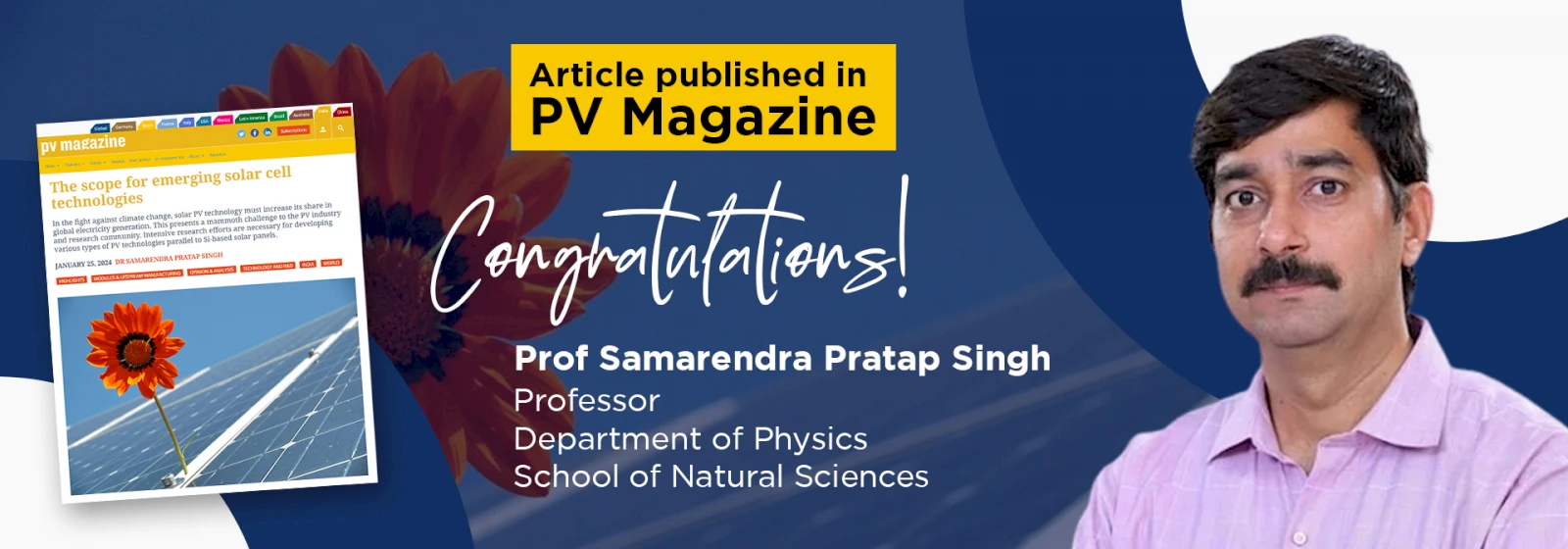Dr. Samarendra Pratap Singh Advocates for Solar Cell Technology Advancement
In a recent article published in PV Magazine, Dr. Samarendra Pratap Singh, Professor, Department of Physics at Shiv Nadar University, sheds light on the imperative need for advancements in solar cell technologies to combat climate change effectively.
Highlighting the pressing challenge of climate change, Dr. Singh emphasizes the detrimental impact of fossil fuel-based electricity generation on the environment, attributing it to the alarming increase in carbon dioxide emissions. He underscores the significance of transitioning to renewable energy sources like solar panels and wind turbines to mitigate the adverse effects of climate change.
Dr. Singh traces the evolution of photovoltaic (PV) technologies from their inception in the 19th century to the present day, noting significant efficiency and cost reduction advancements. He underscores the pivotal role of research and development in driving innovation in PV technologies, particularly in enhancing the efficiency of silicon-based solar cells and exploring emerging concepts such as perovskite and organic solar cells.
Citing a report from the International Energy Agency (IEA), Dr. Singh predicts that solar PV installed capacity will surpass that of coal by 2027, signalling a monumental shift towards clean energy generation. He applauds India's remarkable progress in solar energy deployment, citing a significant increase in installed capacity and a substantial reduction in solar power tariffs.
Furthermore, Dr. Singh advocates for the widespread adoption of distributed PV systems, highlighting their potential to revolutionize urban energy landscapes and reduce greenhouse gas emissions. He stresses the importance of integrating solar panels into building infrastructure to maximize energy efficiency and combat air pollution in urban environments.
In conclusion, Dr. Samarendra Pratap Singh underscores the critical role of research and innovation in advancing solar cell technologies to meet the escalating demand for clean energy and address the challenges posed by climate change. His insightful analysis serves as a clarion call for concerted PV industry and research community efforts to drive the transition towards a sustainable energy future.
